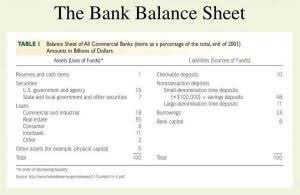
Unfortunately, significant uncertainty is inherent in virtually all such projects. The probability of success can be difficult to determine for years and is open to manipulation for most of that time. Often the only piece of information that is known with certainty is the amount that has been spent. In the United States, for example, the Research & Experimentation (R&E) Tax Credit allows companies to claim a credit for a portion of their qualified research expenses. This credit can be a powerful tool for reducing federal income tax liability, making it particularly attractive for companies with substantial R&D investments. To qualify, expenses must meet specific criteria, such as being incurred in the pursuit of new or improved business components and involving a process of experimentation.
- Problems with SSAP 13 SSAP 13 is not in line with the newer International Accounting Standard covering this area.
- Typically, the ALSFRS is an assessment done by a health care professional in the office.
- The share of the nonclinical stage increased to 27.0% (95% CI, 22.1%-28.1%) of the total when failure cost was accounted for, and to 40.2% (95% CI, 35.2%-44.6%) when both failure and capital costs were considered.
- So far we have established that expenditure on R&D can fall into the category of intangible assets.
- In this perspective, interactions between supply and demand within markets will ultimately result in a balance between the two.
Related Article

Generally, when a company spends money on R&D, it has to record these costs as expenses right away. This method is cautious because it’s often uncertain whether the money spent on R&D will lead to profitable products or inventions in the future. Recording these costs immediately can lower the company’s earnings on paper for that time period. Amortization is the process used for spreading r&d accounting the cost of an intangible asset (like software licenses, patents, or copyrights) over its useful life, making your business’s financial statements a more accurate reflection of its yearly expenses and income. This method ensures that the cost of assets that benefit your business over several years is recognized in a way that matches their contribution to generating revenue.
How does GAAP treat R&D expenses?
Furthermore, our study, like that of DiMasi et al,17 did not include data on other components of costs, such as operating expenses, advertising costs, costs of goods sold, amortization, and tax expenses, which affect profitability. Further research is needed to understand the importance of such costs to R&D intensity and profitability and the factors underlying innovation. Differences in sample selection, data sources, therapeutic areas examined, definitions, and modeling assumptions may limit direct comparison with other studies. The findings from this economic evaluation study have 2 important implications regarding strategies to control drug costs. The high level of investment required to develop a new drug has long been the most prominent talking point deployed by the drug industry to oppose drug pricing reform efforts. However, surprisingly little is known about the costs of drug development, because firms rarely disclose verifiable information about the expenses related to individual drug candidates.
Accounts Expenses
This step and step 9 identify and explain qualified research expenses reported outside of ASC 730 for financial reporting purposes. Identification of the source of the qualified research expenses assists examiners in determining if there is enough risk to further examine these expenses. Remove costs that qualify as R&D for financial reporting purposes but do not meet the requirements of IRC sections 41 and 174. This includes the costs of obtaining a patent and attorney’s fees related to making that patent application. While the similarities between ASC 730, IRC section 41, and IRC section 174 far outweigh the differences, there are situations where ASC 730 includes some costs as R&D costs that do not qualify under either tax code section, and vice versa. A variety of costs may be incurred during the R&D process, and each should be evaluated independently.
What is amortization?
Typically, the ALSFRS is an assessment done by a health care professional in the office. This study will determine whether this assessment could be done at home, decreasing the amount of travel for patients and their families to participate in clinical trials. Additionally, the contract will include a Patient Committee for advice, transparency and oversight. This contract is partially funded by the National Institutes of Health (NIH) National Institute of Neurological Disorders and Stroke.
Access Exclusive Templates
Generally Accepted Accounting Principles (GAAP) or International Financial Reporting Standards (IFRS). These criteria include the expectation of future economic benefits, the ability to measure the cost reliably, and, in some cases, evidence of technical and commercial feasibility. Research phase It is impossible to demonstrate whether or not a product or service at the research stage will generate any probable future economic benefit. As a result, IAS 38 states that all expenditure incurred at the research stage should be written off to the income statement as an expense when incurred, and will never be capitalised as an intangible asset.
- There is a presumption that the fair value (and therefore the cost) of an intangible asset acquired in a business combination can be measured reliably.
- For clinical research-specific definitions, see also the Clinical Research Glossary developed by the Multi-Regional Clinical Trials (MRCT) Center of Brigham and Women’s Hospital and Harvard and the Clinical Data Interchange Standards Consortium (CDISC).
- Section 174 requires companies to document their R&D activities carefully and ensure that expenditures qualify for the specific deductions.
- By contrast, though, development costs can be capitalized if the company can prove that the asset in development will become commercially viable (meaning the technology or product in development is likely to make it through the approval process and generate revenue).
- Accounting standards require companies to expense all research and development expenditures as incurred.
- To capitalize and estimate the value of these assets, an analyst needs to estimate how many years a product or technology will generate benefit for (its economic life) and use that as an assumption for the amortization period.
Included and excluded activities.
Historically, the U.S. government has worked to keep research and development onshore for the good of the economy. They have always allowed companies to expense their costs and receive a tax credit immediately. Capitalizing R&D is the process a business will use to classify a research and development activity as an asset rather than an expense. Capitalized R&D moves the costs of research and development from the top of the balance sheet to the bottom. Problems with SSAP 13 SSAP 13 is not in line with the newer International Accounting Standard covering this area. As seen previously, the UK allows a choice over capitalisation; this can lead to inconsistencies between companies and, as some of the criteria are subjective, this ‘choice’ can be manipulated by companies wishing to capitalise development costs.
How is R&D treated in accounting?
- Indeed, before the TCJA’s enactment, businesses deducted the total amount of R&D expenditures as an expense in the taxable year.
- Yes, research and development costs can be amortized, especially when these costs are capitalized as intangible assets.
- It’s important to note that net income doesn’t include the significant investments in R&D under its cash flow from investing activities.
- R&D intensity has also accelerated during this period from 11.9% to 17.7%, with a mean of 13.4% for the full study period.
- Receive the latest financial reporting and accounting updates with our newsletters and more delivered to your inbox.
- A summary of all expenses is included in the income statement as deductions from the total revenue.
Receive the latest financial reporting and accounting updates with our newsletters and more delivered to your inbox. One notable difference between the UK and international treatment is that the UK has a separate standard for the treatment of R&D (SSAP 13), whereas under International Accounting Standards the accounting for R&D is dealt with under IAS 38, Intangible Assets. Equally, the argument exists that it may be impossible to predict whether or not a project will give rise to future income.
3 Research and development costs

